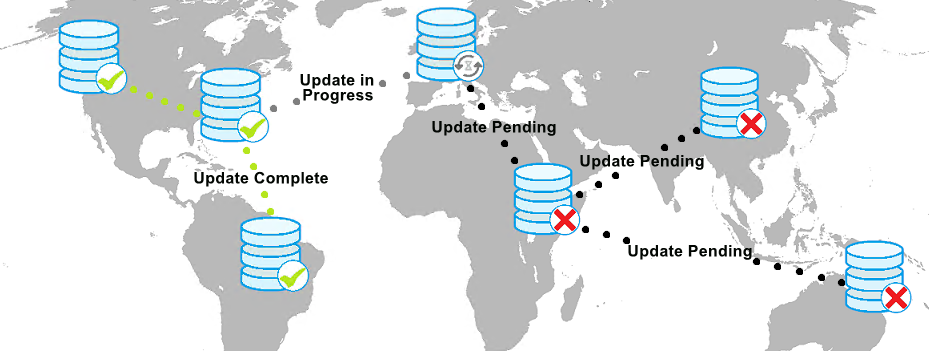Hostwinds Tutorials
Search results for:
Table of Contents
What is DNS Propagation?
Tags: DNS
DNS propagation is how long it takes to update the nameservers of a domain to take effect – usually in under a few hours, but sometimes up to 24-48 hours.
This is the period of time it takes ISPs (Internet Service Providers) to spread your update throughout their caches worldwide. Due to DNS caching, some website visitors may see an old page during this time, while other users may see the new update immediately.
Let's take a moment to look at why this change can take so long and somewhat bypass the propagation period.
Why Does Propagation Take So Long to Complete?
This is a pervasive question from anyone who has ever hosted a site on the internet. When you use a web browser to access a website, your query is passed off from node to node until it reaches the destination server. Each of these nodes is typically owned by an ISP (Internet Service Provider), and they may update their individual caches at different times.
Essentially, the Internet has several mega servers, called Root Nameservers, that store all the information on which IP a domain points to. These servers are owned primarily by large corporations (such as Verisign) or government entities (such as NASA or the US Army). These servers store the data in a cache and update their caches at certain intervals by checking the neighboring root nameservers if they have any updates.
Since different groups are running the servers, their updates are performed on different schedules. If we update your DNS at 12:00 PM on a Monday, root server A may run an update at 13:00, but server D might not run their update until midnight. If your website is connected on Server D, that means server A won't get updated until 13:00 on Tuesday since Server D wasn't updated on Monday. In this way, the servers check as many of their neighbors multiple times a day but can only update if their neighbor has updated. This means it can take upwards of 3 days for all the nameservers to be accurate. It's, unfortunately, a process that cannot be sped up, but there is a way to bypass the DNS propagation if you have not already changed your nameservers. Let's take a look at how this can be achieved. We've created a handy image for you to review that visually explains this process below.

How to Bypass DNS Propagation
Note: This method ONLY works if you have NOT changed your nameservers during a website transfer. If you have already changed your nameservers, it's best to wait for propagation to complete, as making multiple changes could delay the propagation time.
You can check a domain's propagation status by using a wonderful online tool called What's My DNS.
To reduce/bypass propagation time, you simply need to do the following:
- Change the TTL (Time to Live) for the DNS records you would like to change to a value such as 300 seconds
- Wait for the previous TTL value to expire
- Change the DNS record A record
- Allow the TTL value to expire to confirm the changes have taken place
- Change your nameservers to your new host
Once this process is complete, your domain should begin resolving the same content regardless of whether the user's browser pulls the site up from your old host or the new one.
Related Tutorials
Written by Hostwinds Team / December 13, 2016
